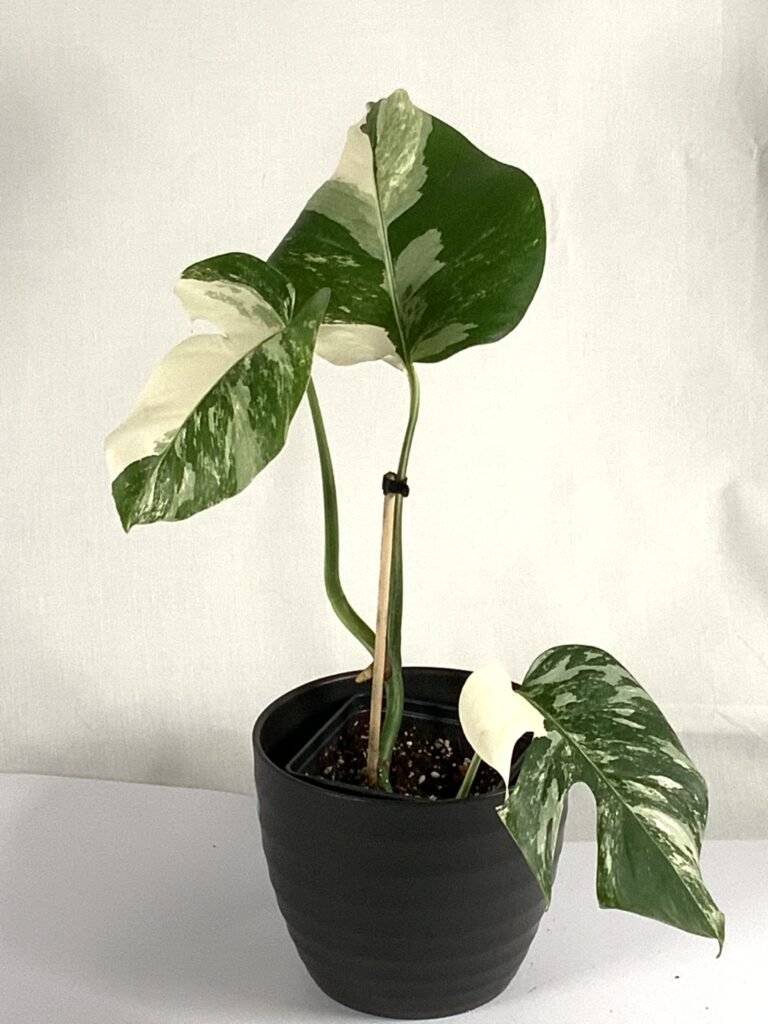No products in the basket.
Plants Blog
How to Care for Monstera Plants
Monstera is a popular unique indoor plant seen in many homes and offices. A Central American native plant, it is well known for its characteristic natural leaf-hole designs called fenestrations. Monstera plants love bright indirect light. They are an ideal plant even for the inexperienced plant owner being an easygoing vining house plant that can tolerate occasional missed watering.
Monstera plants have two species, the Monstera deliociosa, and Monstera adansonii. The latter has a longer leaf with a tapered end and completely enclosed holes. The leaf holes in a mature Monstera deliciosa have opened up as they grew towards the edge.
General Care
1. Light
You may grow Monstera just about anywhere in your home. It thrives in low, medium to bright indirect light but grows faster in bright areas. It is not suited to intense direct sun as it may burn the leaves. It can however be acclimated to withstand it.
2. Water
Water your Monstera when the soil is almost completely dried out or about every 1-2 weeks. Increase the watering frequency with increased light, more often during the warmer months while they are growing. Reduce watering during the winter months.
- Temperature
While able to withstand most household temperatures, Monstera plants grow best between 65°F to 85°F (18°C-30°C). Temperatures below 60°F (15°C) will stop their growth.
4. Humidity
These plants do well in normal room humidity but they benefit more from higher humidity conditions. You can place a tray filled with pebbles and water near it to increase humidity around the plant immediately.
5. Fertilizer
During the houseplant’s active growing season, it can be fertilized with either ¼-diluted complete liquid fertilizer or ¼-diluted fish emulsion with iron or twice a month. Topdressing your plants in the spring with compost such as worm castings is another option. Fertilizers or compost slowly release nutrients to the plant’s roots throughout the growing season.
6. Toxicity
The Monstera plant’s leaves are mildly toxic to pets and humans when ingested and can cause mouth and stomach irritation and possibly vomiting. It is good to keep the houseplants out of reach of small children and pets.
More Monstera Plant Care Tips
- Make sure you have plenty of room for the green plant to grow. You may use stakes to support and shape it as it grows.
- Occasionally rotate your Monstera to promote a full, balanced plant.
- Trim the houseplant, particularly at the swollen nodule where the leaves and aerial roots form to propagate the plant.
- Regularly check the top and bottom of the leaves for pests and disease and address them accordingly. Treat pests once you notice them with weekly sprays of horticultural (neem) oil.
- The houseplant’s large leaves can collect dust. Wipe dusty and dirty leaves with a damp cloth and let them dry for a clean and healthy look. Clean leaves will also allow photosynthesis to work better on them.
- Underwatered Monstera plants can result in leaves turning brown or crispy at the leaf edges, wilting, or curling green leaves.
- Overwatering can cause leaves to turn yellow and the stems black while the potting mix is wet.
- The green leaves of the plant can also curl when it is rootbound or subjected to cold shock. Repot rootbound plants.
It is amazing how a gorgeous Monstera plants that improve the quality of the air you breathe, induce feelings of calm, and provide plenty of delight can require minimal effort to grow and care for from its owner.

